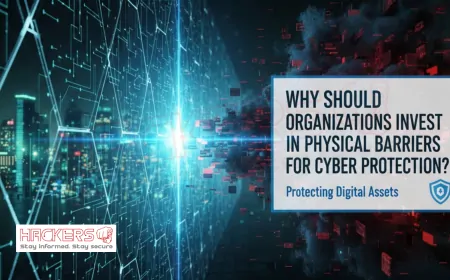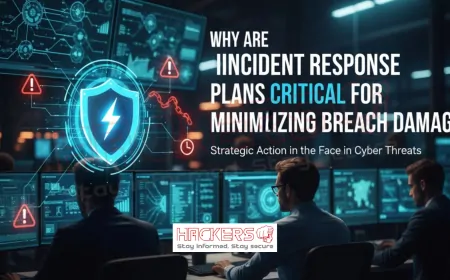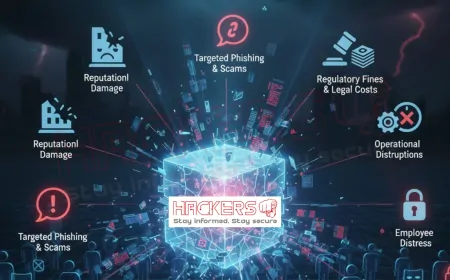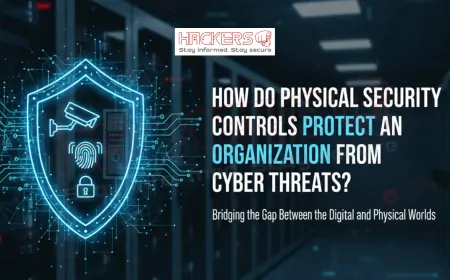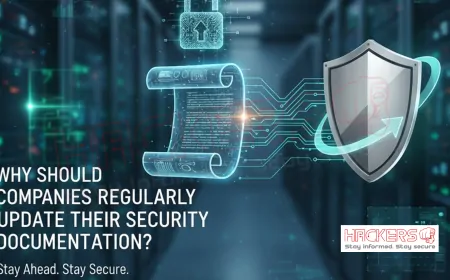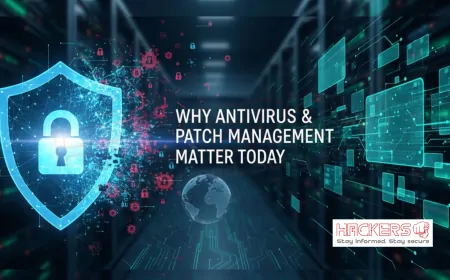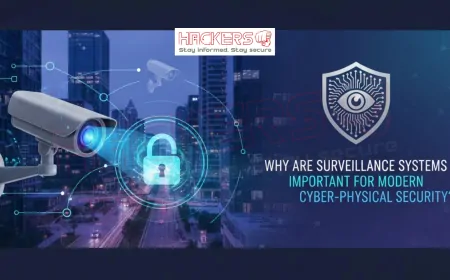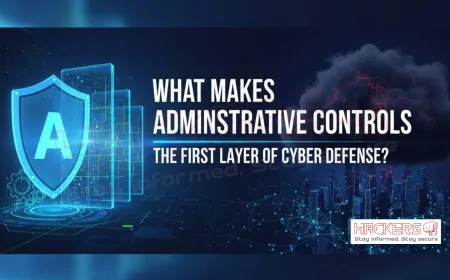What Caused the Cyberattack That Led to Mumbai’s 10-Hour Power Blackout?
On October 12, 2020, the bustling streets of Mumbai fell silent. Lights flickered out across the financial capital. Hospitals switched to generators. Trains ground to a halt. The stock exchange went dark. For over 10 hours in some areas, the city that never sleeps was plunged into blackout. What started as a routine Monday morning turned into chaos. Billions in losses. Panic in the air. And at the heart of it all, a question that lingers: was this a simple glitch, or something far more sinister? Reports soon emerged of suspicious logins from foreign servers. Malware traces pointed to state actors. The world watched as India investigated. This blog dives deep into the cyberattack suspected to have triggered Mumbai's longest power outage in decades. It uncovers the technical failures, the geopolitical shadows, and the lessons that still echo today. For a city that powers India's dreams, this was a wake-up call no one saw coming.

Table of Contents
- The Day Mumbai Went Dark
- Immediate Impact and Initial Response
- Timeline of the Blackout
- The Technical Breakdown
- Evidence of a Cyberattack
- Who Were the Attackers?
- The Investigation Unfolds
- Geopolitical Tensions and Timing
- Key Statistics: A Data Table
- Lessons Learned and Reforms
- Preventing Future Blackouts
- Conclusion
- Frequently Asked Questions
The Day Mumbai Went Dark
Mumbai, home to 20 million people, relies on a complex web of power lines, substations, and control centers. On that fateful day, a trip at the Padgha substation in Thane district cascaded into a city-wide failure. Power suppliers like Tata Power, Adani Electricity, and BEST saw their systems overload. The outage hit at 10:20 AM, just as offices buzzed and markets opened. Hospitals like Lilavati and Kokilaben went on backup. The Bombay Stock Exchange halted trading. Local trains, the lifeline for commuters, stopped dead. Traffic lights failed, causing jams for miles. By noon, some areas had flickering lights. But central suburbs waited until evening. The 10-hour ordeal exposed Mumbai's fragility. It was not just darkness. It was a reminder: in our digital age, power is as vulnerable as a password.
Initial reports blamed equipment failure. But whispers grew. Cyber experts noted unusual network activity. Foreign IP addresses pinged servers hours before. As the sun set on a powerless city, the real story began to emerge. This was no accident. It was an attack.
Immediate Impact and Initial Response
The blackout's toll was immediate and wide:
- Hospitals: Over 50 facilities switched to generators. Critical patients risked lives without seamless power.
- Transport: 1,000+ trains stranded. Lakhs of commuters walked home in the heat.
- Economy: BSE and NSE lost hours of trade. Estimated ₹2,000 crore in direct losses.
- Daily Life: ATMs failed. Water pumps stopped. Food spoiled in fridges.
- COVID Response: Testing labs and oxygen plants teetered on backups.
Response kicked in fast. Maharashtra CM Uddhav Thackeray held emergency meets. MSEDCL engineers worked round-the-clock. By 8 PM, 90% power was back. But questions lingered. Why did one substation trip cascade so far? And why the suspicious digital footprints?
Timeline of the Blackout
Let's walk through the hours:
- 9:00 AM: Routine maintenance at Kalva-Padgha line. Load shifts to backup circuit.
- 10:20 AM: Sudden trip at Padgha. Voltage surges hit Mumbai grid.
- 10:30 AM: Blackout spreads to Thane, Navi Mumbai. Trains halt.
- 11:00 AM: Stock exchanges suspend trading. Hospitals alert backups.
- 12:00 PM: Partial restoration in islands. Central areas still dark.
- 4:00 PM: Cyber cell notes unusual logins from Singapore IPs.
- 8:00 PM: Full power returns. Probes begin.
- October 13: MSEDCL blames human error in maintenance.
This sequence showed more than a glitch. It hinted at manipulation.
The Technical Breakdown
At its core, the failure was a cascade. Power grids use SCADA systems: Supervisory Control and Data Acquisition. These computers monitor and control flow. A trip is normal. But here, it snowballed. The backup circuit, under load, overheated. Relays failed to isolate. Within minutes, the 400kV line fed black to the city.
Experts explained: grids need redundancy. Mumbai's aging infrastructure lacked it. The Padgha center, key for load dispatch, had outdated software. A small fault became big because controls did not respond. But was the fault natural? Or triggered?
Evidence of a Cyberattack
Suspicion grew in weeks. Maharashtra Cyber Police probed servers. Findings:
- Suspicious Logins: 14 attempts from Singapore, China-linked IPs. Hours before trip.
- Malware Traces: Trojan horses, disguised viruses, in MSEB servers.
- Data Transfer: 8 GB unaccounted upload to foreign servers.
- Blacklisted IPs: Multiple hits on control systems.
US firm Recorded Future confirmed: RedEcho group, Chinese-linked, targeted 10+ power assets. Mumbai was hit. Malware like ShadowPad lurked, ready to disrupt. It did not fully activate. But enough to tip the balance.
Who Were the Attackers?
Finger pointed east. RedEcho, tracked since 2020, overlaps with APT41: state-sponsored hackers. Motive? Geopolitics. India-China border clashes peaked. Ladakh standoff. Galwan clash. Attacks surged 40,000-fold on ICS in June 2020.
NYT reported: malware flowed as tensions rose. Mumbai, economic hub, was a soft target. A "warning shot." China denied. But timing fit. Not full war. Just a nudge: push too hard, lights go out.
The Investigation Unfolds
Three committees formed. Cyber cell led digital probe. Findings leaked: sabotage likely. Home Minister Anil Deshmukh: foreign agencies tried hacks. Energy Minister Nitin Raut: media reports on China true.
Union Power Minister RK Singh countered: human error. Cyber hits happened, but not linked. Malware did not reach OS. Debate raged. Cyber police: trojans present. Power ministry: coincidence.
By March 2021, consensus: attacks real, cause? Unclear. But safeguards added.
Geopolitical Tensions and Timing
Context mattered. 2020 border clashes killed 20 Indian soldiers. China built roads. India banned apps. Tensions boiled. Cyber became proxy war. Ukraine's 2015 blackout by Russian malware echoed. Stuxnet on Iran. Mumbai fit pattern: low-cost, high-impact.
Experts said: China tested resolve. Mumbai hit hurt economy, not lives. A message: we can, if needed.
Key Statistics: A Data Table
Here is a table summarizing the event's scale:
| Aspect | Details | Impact | Source |
|---|---|---|---|
| Duration | 10+ hours in suburbs | City-wide chaos | MSEDCL Report |
| Affected Areas | Mumbai, Thane, Navi Mumbai | 20 million people | Govt Data |
| Economic Loss | ₹2,000 crore | Trade halt | BSE/NSE |
| Suspicious Logins | 14 from foreign IPs | Pre-attack probes | Cyber Police |
| Malware Detected | Trojans, ShadowPad | Grid compromise | Recorded Future |
| Targeted Assets | 10+ power nodes | National threat | Recorded Future |
These figures paint a picture of vulnerability.
Lessons Learned and Reforms
The blackout spurred change:
- Grid Upgrades: New SCADA with air-gaps.
- Cyber Cells: 50% more funding for forensics.
- Training: 10,000 engineers on threats.
- Laws: CERT-In rules tightened.
- International Ties: US-India cyber pacts.
Mumbai now has redundancies. But experts warn: one breach away from repeat.
Preventing Future Blackouts
Future-proofing needs boldness:
- AI Monitoring: Real-time anomaly detection.
- Quantum Encryption: Hack-proof comms.
- Public Awareness: Citizen reporting apps.
- Global Norms: UN cyber treaties.
- Investment: ₹10,000 crore grid fund.
India leads in digital growth. But security must match.
Conclusion
Mumbai's 10-hour blackout was more than a power cut. It was a cyber wake-up. Technical trips met malware shadows. Geopolitics fueled the fire. Investigations clashed: sabotage or error? Evidence leans cyber, with Chinese links amid border woes. Impacts scarred the city. Lessons hardened defenses. Today, Mumbai shines brighter, but vigilance remains. This event teaches: in connected world, one weak link dims all. Governments invest. Companies secure. Citizens stay alert. The lights are back. But the threat? Ever-present. Mumbai endured. Now, it must evolve.
Frequently Asked Questions
What caused the Mumbai blackout?
A substation trip cascaded, worsened by suspected malware.
Was it really a cyberattack?
Evidence suggests yes, but government says human error played key role.
Who was behind it?
China-linked RedEcho group, per US reports.
How long did it last?
Up to 10 hours in central areas.
What was the economic cost?
Around ₹2,000 crore in lost trade and operations.
Did hospitals suffer?
Yes, but backups kept critical care running.
Why target Mumbai?
Economic hub; symbolic hit amid India-China tensions.
What malware was used?
Trojans and ShadowPad for grid control.
Did trains stop?
Yes, over 1,000 stalled, stranding lakhs.
What reforms followed?
Grid upgrades, more cyber funding, training.
Is the grid safer now?
Yes, with redundancies and AI monitoring.
China denied involvement?
Yes, called reports irresponsible.
How many suspicious logins?
14 from foreign IPs pre-blackout.
Was it linked to Ladakh?
Timing suggests yes, during border standoff.
What is SCADA?
Systems controlling power flow; vulnerable to hacks.
Any arrests?
No, but probes continue internationally.
Impact on stock market?
Trading halted for hours; volatility spiked.
Lessons for India?
Invest in cyber defense for critical infra.
Similar attacks elsewhere?
Yes, Ukraine 2015 by Russia.
Future prevention?
Quantum tech, global norms, public vigilance.
What's Your Reaction?




























